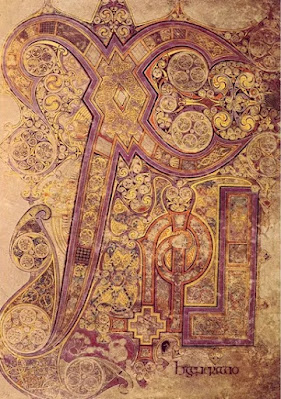The antagonists were Olaf Guthfrithson, King of Dublin, Constantine II, King of Scotland, and Owain, King of Strathclyde. Olaf sailed from Dublin in August, and the battle must have taken place before winter, but we don't know exactly when. Nor do we know exactly where Brunanburh was. We know the name "Brunanburh" from the Old English poem about the battle that is found in four of the nine surviving copies of the Anglo-Saxon Chronicle.
The poem, our source of information about the battle, begins by praising Æthelstan and his brother, Edmund:
King Athelstan, the lord of warriors,Patron of heroes, and his brother too,Prince Edmund, won themselves eternal gloryIn battle with the edges of their swordsRound Brunanburh; they broke the wall of shields,The sons of Edward with their well-forged swordsSlashed at the linden-shields; such was their natureFrom boyhood that in battle they had oftenFought for their land, its treasures and its homes,Against all enemies. Their foes fell dead,The Scottish soldiers and the pirate hostWere doomed to perish; and with blood of menThe field was darkened from the time the sunRose at the break of day, the glorious star,
God the Eternal Lord's bright candle passed
Across the land, until this noble creature
Sank to its resting-place. [source]
As the poem says, the battle lasted all day. The invaders broke ranks and fled, and Æthelstan's men pursued them. Olaf sailed back to Dublin and Constantine fled northward to Scotland, but the fate of Owen of Strathclyde is not mentioned.
The battle is corroborated in the Annals of Ulster, recording that several thousands of Norsemen were killed, including five kings and seven earls who accompanied Olaf. Constantine's son was killed. English losses were not zero: the Annals of Clonmacnoise list Æthelstan's cousins among the deceased. Over three dozen medieval texts— Anglo-Saxon, Irish, Welsh, Scottish, Norman, and Norse—mention the battle. The Annales Cambriae simply lists "war at Brune" as its sole 937 entry, but others offer detail that coincides with the Anglo-Saxon poem.
Historians refer to the Battle of Brunanburh and its decisive victory over invaders as the moment when all of the smaller kingdoms in England came together and established their unity as "England." Æthelstan is considered by some to be the first king of a united England. Unfortunately, he did not have long to enjoy this status. I'll explain tomorrow.







